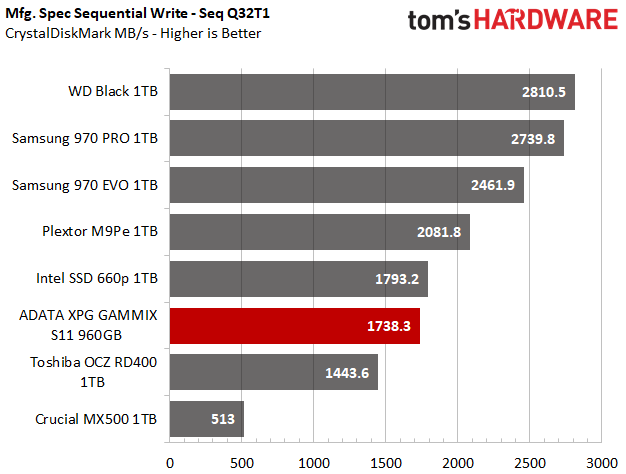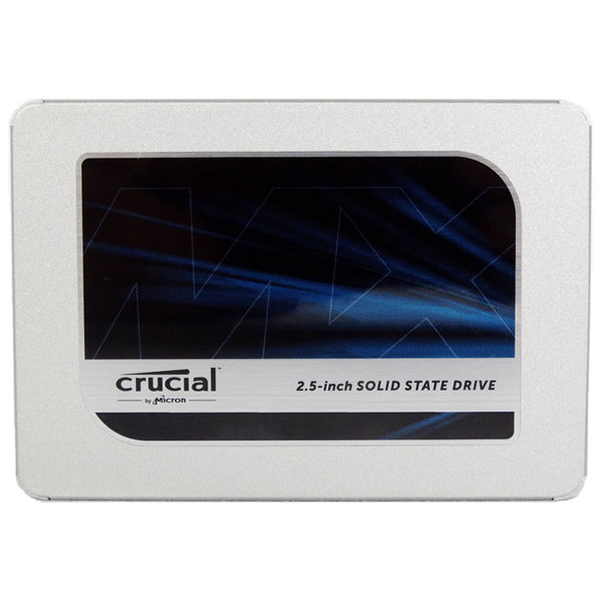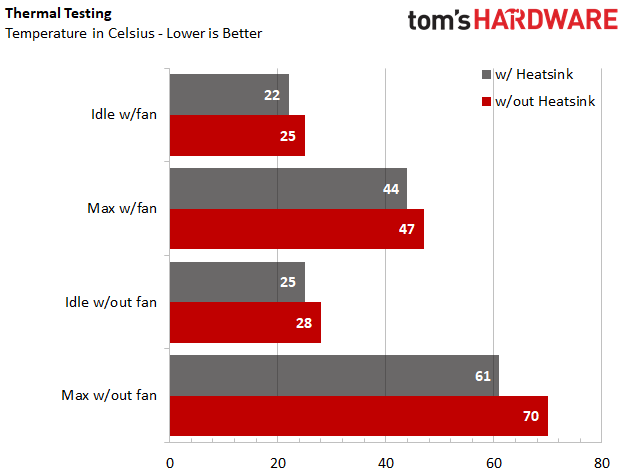Adata XPG Gammix S11 960GB NVMe SSD Review: Top Dollar Performance At Bottom Dollar Prices
Why you can trust Tom's Hardware
960GB Performance Results
Comparison Products
We included the Intel SSD 660p, a newcomer powered by an SMI SM2263 controller and Intel's QLC NAND, in our test pool. It’s a low-cost entry-level product, but it packs a punch. We also have the Samsung 970 EVO, WD Black, and Plextor M9Pe. All these SSDs come with 3D TLC flash and compete head to head with the Gammix S11, but they are pricier. The Samsung 970 PRO, the highest performing NAND-based SSD on the market, and the Toshiba OCZ RD400, which has 2D planar MLC NAND, also made the cut. Finally, we threw in the Crucial MX500 as our mainstream SATA representative.
Trace Testing – PCMark 8 Storage Test 2.0


PCMark 8 is a trace-based benchmark that uses Microsoft Office, Adobe Creative Suite, World of Warcraft, and Battlefield 3 to measure the performance of storage devices in real-world scenarios.
The Gammix S11 didn't look too good in our first benchmark: Even the QLC-based Intel 660p performed better. The Samsung 970 PRO absolutely crushed all of the other drives, but that wasn’t surprising given its premium price point.
Game Scene Loading - Final Fantasy XIV
The Final Fantasy XIV StormBlood benchmark is a free real-world game benchmark that easily and accurately compares game load times without the inaccuracy of using a stopwatch.
When it comes to gaming, the S11 didn't disappoint. Adata's gamer-focused XPG Gammix S11 outperformed all but the RD400 and Intel Optane SSD 905P. It even beat the Samsung 970 EVO and PRO SSDs.
Transfer Rates – DiskBench


We use the DiskBench storage benchmarking tool to test file transfer performance with our own custom 50GB block of data. Our data set includes 31,227 files of various types, like pictures, PDFs, and videos. We copy the files to a new folder and then follow up with a read test of a newly-written 6 GB file.
The Gammix S11 handled mixed read and write file transfers quite well. It averaged 335MB/s during our 50GB file copy test. It didn’t outperform the Samsung 970s, but it more than doubled the Crucial MX500 and was significantly faster than the Plextor M9Pe.
Get Tom's Hardware's best news and in-depth reviews, straight to your inbox.
The S11 also took fourth place in our read test with a respectable transfer rate of 2,113MB/s.
SYSmark 2014 SE


Like PCMark, SYSmark uses real applications to measure system performance. SYSmark takes things much further, however. It utilizes fourteen different applications to run real application workloads with real data sets to measure how overall system performance impacts the user experience. BAPCo's SYSmark 2014 SE installs a full suite of applications for its tests, which includes Microsoft Office, Google Chrome, Corel WinZip, several Adobe software applications, and GIMP. That also makes it a great test to measure the amount of time it takes to install widely-used programs after you install a fresh operating system.
We installed SYSmark on the speedy Gammix S11 in just 15 minutes. The drive nearly tied the Plextor M9Pe and was just 9 seconds slower than the Intel Optane SSD 905p. The Gammix S11 flew through our benchmark and did well in our responsiveness test as it once again surpassed the Samsung 970 EVO and PRO.
ATTO


ATTO is a simple and free application that SSD vendors commonly use to assign sequential performance specifications to their products. It also gives us insight into how the device handles different file sizes.
The S11's 3.1GB/s of sequential read throughput challenged the Samsung 970 PRO up to the 32KB file size. The S11's 1.75GB/s of write throughput wasn’t as impressive, though it was similar to Intel's 660p.
Anvil's Storage Utilities



Anvil's Storage Utility is a commonly-referenced benchmark that simplifies the complex IOMETER benchmark and its underlying Dynamo engine with a one-click software wrapper. The Gammix S11 scored a middling 12,707 points in the overall score, placing fifth in our comparison chart.
CrystalDiskMark (CDM)








CrystalDiskMark (CDM) is a simple and easy to use file size benchmarking tool. We measured 3,128/1,738 MB/s of read/write throughput at a queue depth (QD) of thirty-two.
QD1 is more representative of performance in the operating system and common applications. The S11 delivered 1,994/1,531 MB/s of sequential read/write throughput at QD1.
Power Consumption
We use the Quarch XLC Programmable Power Module to gain a deeper understanding of power characteristics. Idle power consumption is a very important aspect to consider, especially if you're looking for a new drive for your laptop. Some SSDs can consume watts of power at idle while better-suited ones sip just milliwatts. Average workload power consumption and max consumption are two other important aspects. You might think that lower power consumption is better than high peak values, but performance-per-watt is more important. A drive might consume more power during any given workload, but accomplishing a task faster allows the drive to drop into an idle state faster, which ultimately saves power.





The XPG Gammix S11 wasn’t the most efficient drive in our test pool, but it was definitely not the worst. It averaged 3.81W and hit a maximum of 6.25W during our 50GB file transfer test. That equates to 88MB/s per watt, which nearly tied the Samsung 970 EVO.
The S11 consumed 0.763W with ASPM disabled, but that dropped ten-fold to just 58mW after we enabled the feature.
Thermal Testing
At idle with the fan, the S11 hovered at 22C with the heatsink and 25C without. Without the fan, the S11 idled at and 25C with the heatsink and 28C without the heatsink.
We tested if the heatsink truly made a difference by writing 250GB of movie files without stopping. We tested both with and without a 140mm fan aimed at the SSD in a temperature-controlled room (21C). The S11 maxed out at 44C with the heatsink and reached 47C without it. We removed the fan and the S11 hit 61C with the heatsink and 70C without.
MORE: Best SSDs
MORE: How We Test HDDs And SSDs
MORE: All SSD Content

Sean is a Contributing Editor at Tom’s Hardware US, covering storage hardware.
-
USAFRet Reply21263515 said:What you mean by not fully supporting ssd toolbox?
It just means that the ADATA management tool (SSD Toolbox) does not yet recognize this drive. -
mamasan2000 There are free options to migrate your OS etc.Reply
I used this: https://www.aomeitech.com/aomei-partition-assistant.html
Works like a charm -
USAFRet Reply21263983 said:There are free options to migrate your OS etc.
I used this: https://www.aomeitech.com/aomei-partition-assistant.html
Works like a charm
There are multiple tools that can do that. I prefer Macrium Reflect.
But this has nothing to do with this review. -
bburko01 I was just thinking of upgrading to a M.2 with the 1 TB Sasmsung 970 Pro. I do a fair amount of hobby stuff with the Adobe suite (photoshop, after effects and premier pro). The only game I really play is World of Warships. I'll have to compare specs but the XPG has the same amount of space pretty much. Do you guys think I would do just as well and saving some cash by getting the XPG? Only difference I see here is the TBW. Not sure if I need to be seriously concerned with that. Thanks for your thoughts,Reply -
USAFRet Reply21266739 said:I was just thinking of upgrading to a M.2 with the 1 TB Sasmsung 970 Pro. I do a fair amount of hobby stuff with the Adobe suite (photoshop, after effects and premier pro). The only game I really play is World of Warships. I'll have to compare specs but the XPG has the same amount of space pretty much. Do you guys think I would do just as well and saving some cash by getting the XPG? Only difference I see here is the TBW. Not sure if I need to be seriously concerned with that. Thanks for your thoughts,
For your use, the 970 EVO is zero performance difference from the 970 Pro.
But that ADATA would probably serve just as well. -
AgentLozen I appreciate that you included a mechanical hard drive in some of these benchmarks. It helps put SSD performance in perspective when you see that mechanical drive lagging behind with 1/10 of the performance.Reply -
Erik_37 Reply21263549 said:21263515 said:What you mean by not fully supporting ssd toolbox?
It just means that the ADATA management tool (SSD Toolbox) does not yet recognize this drive.
Will it be supported eventually and is good enough to use without the ssd toolbox? -
USAFRet Reply21273788 said:21263549 said:21263515 said:What you mean by not fully supporting ssd toolbox?
It just means that the ADATA management tool (SSD Toolbox) does not yet recognize this drive.
Will it be supported eventually and is good enough to use without the ssd toolbox?
"eventually"...only ADATA knows.
Good enough? Maybe. I wouldn't discount that drive simply because that toolkit doesn't know about it.
For similar performance to a 970 Pro, and significant price reduction....I might go for it if I was in the market for a M.2 NVMe.




